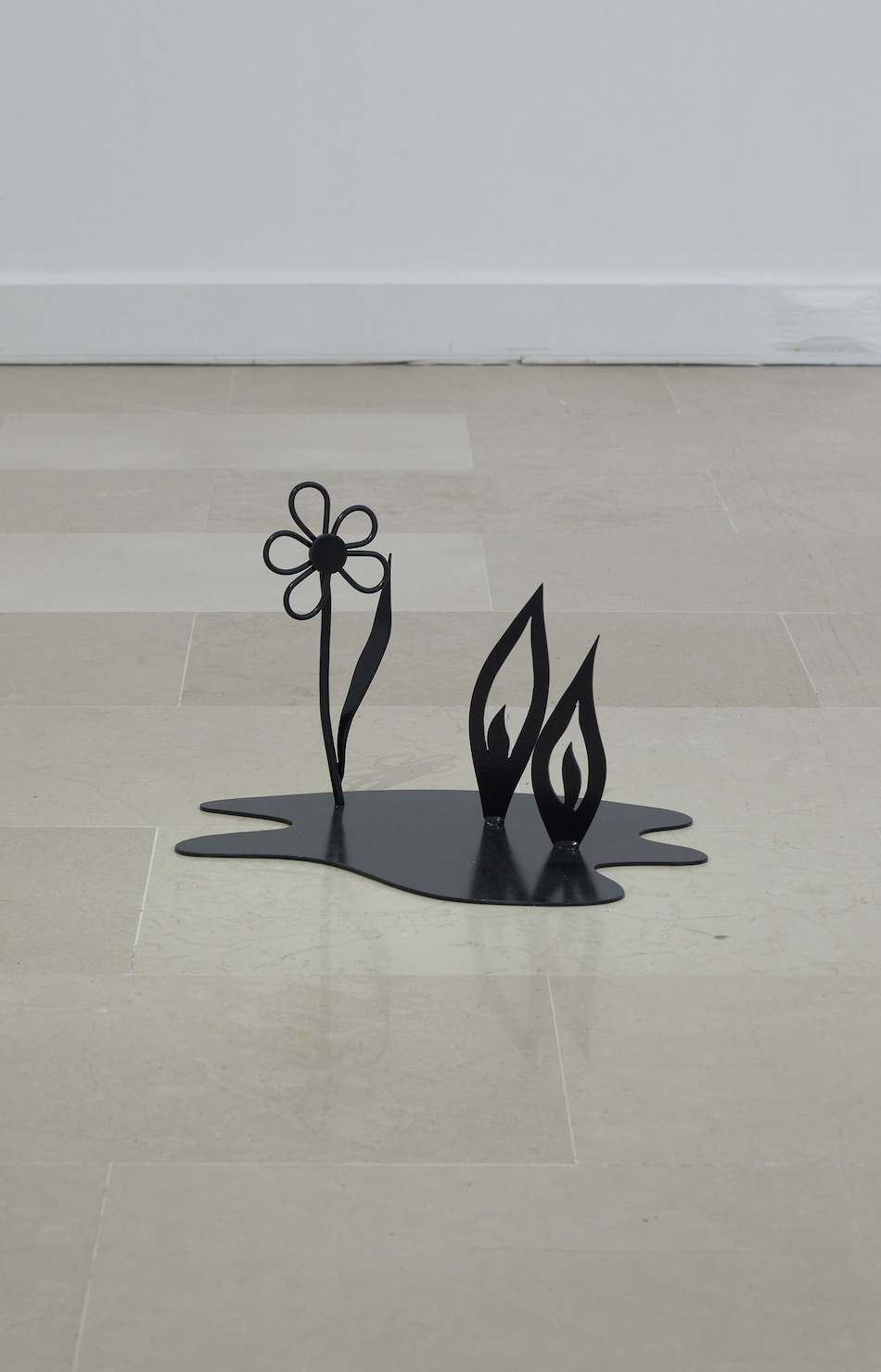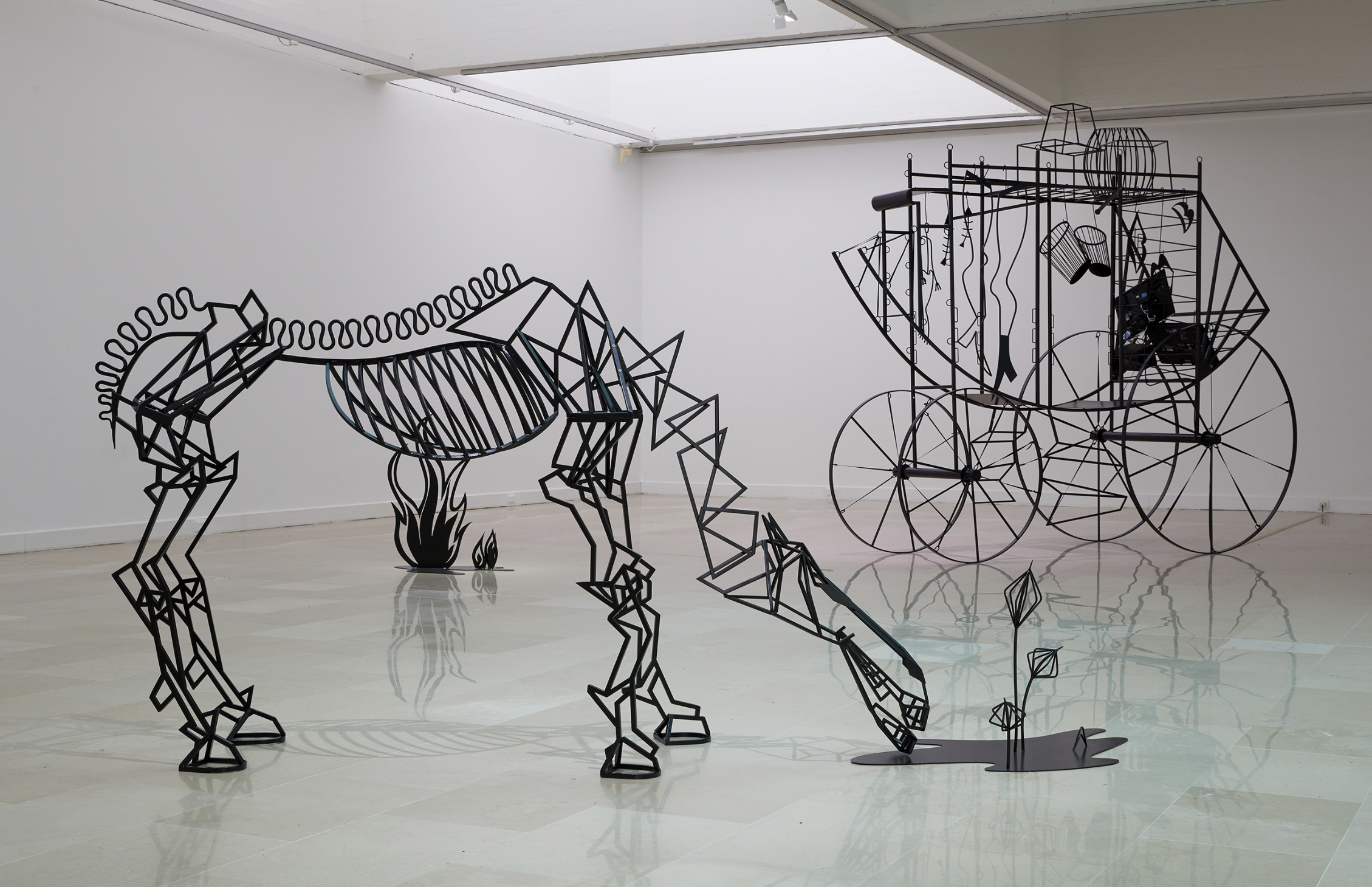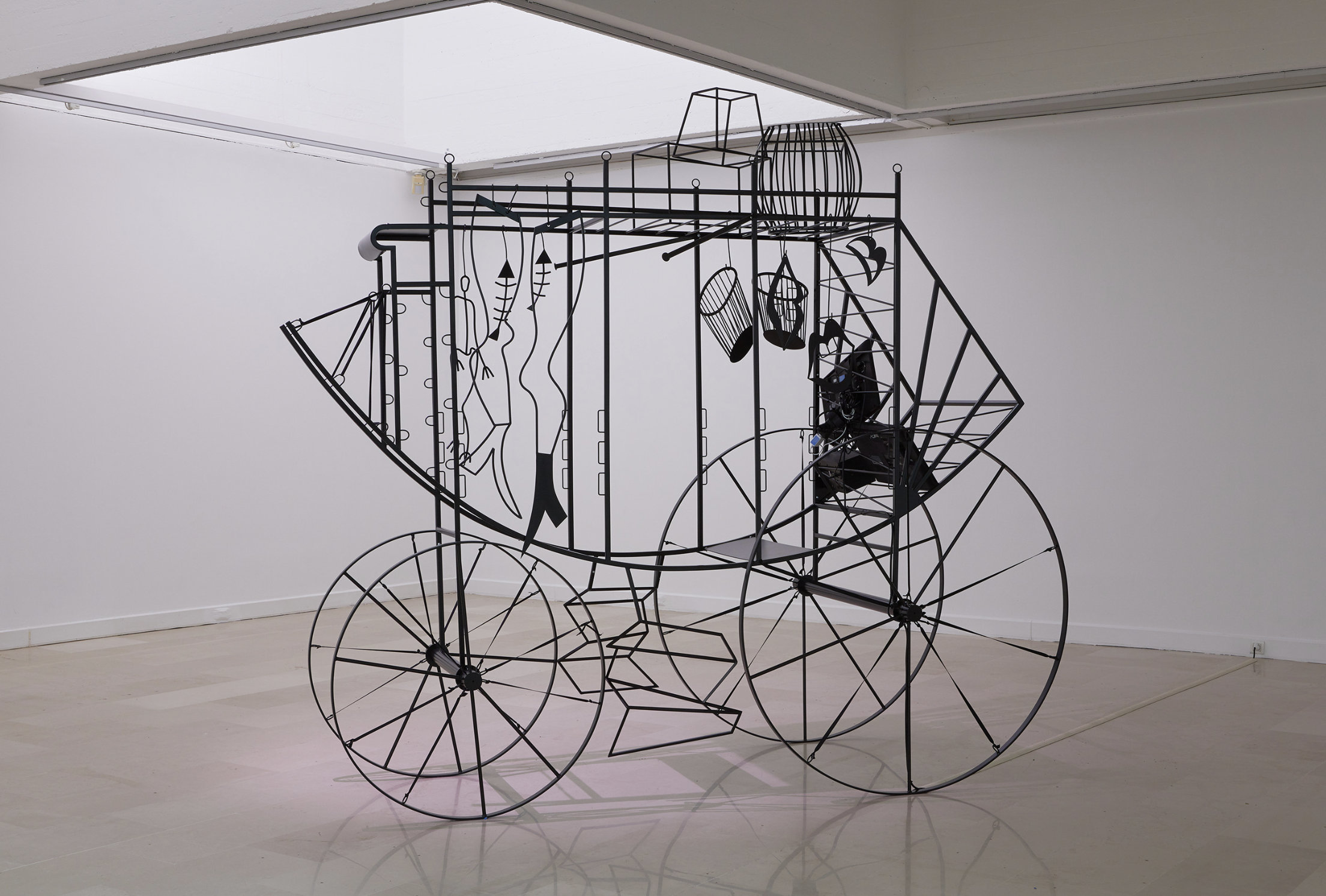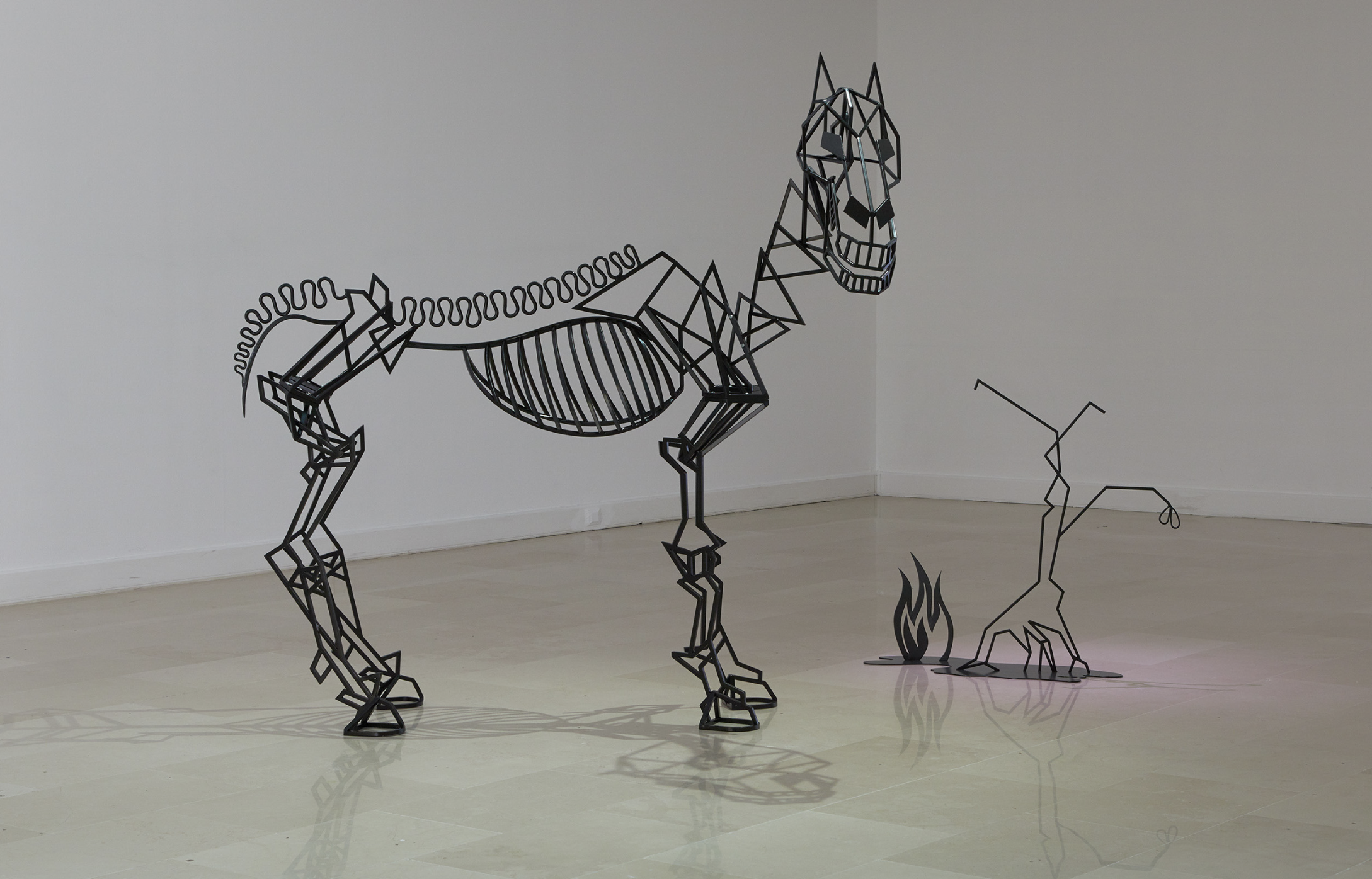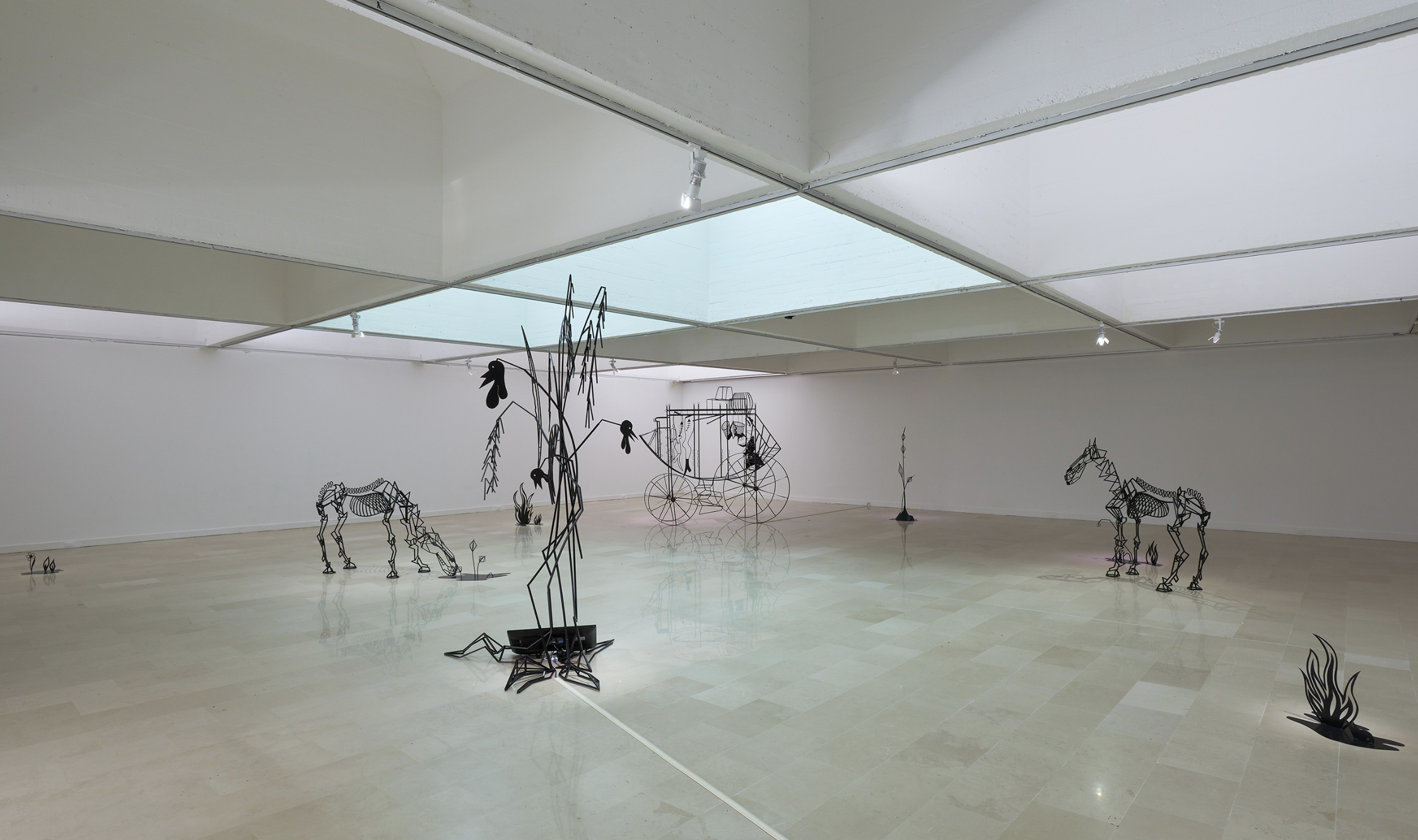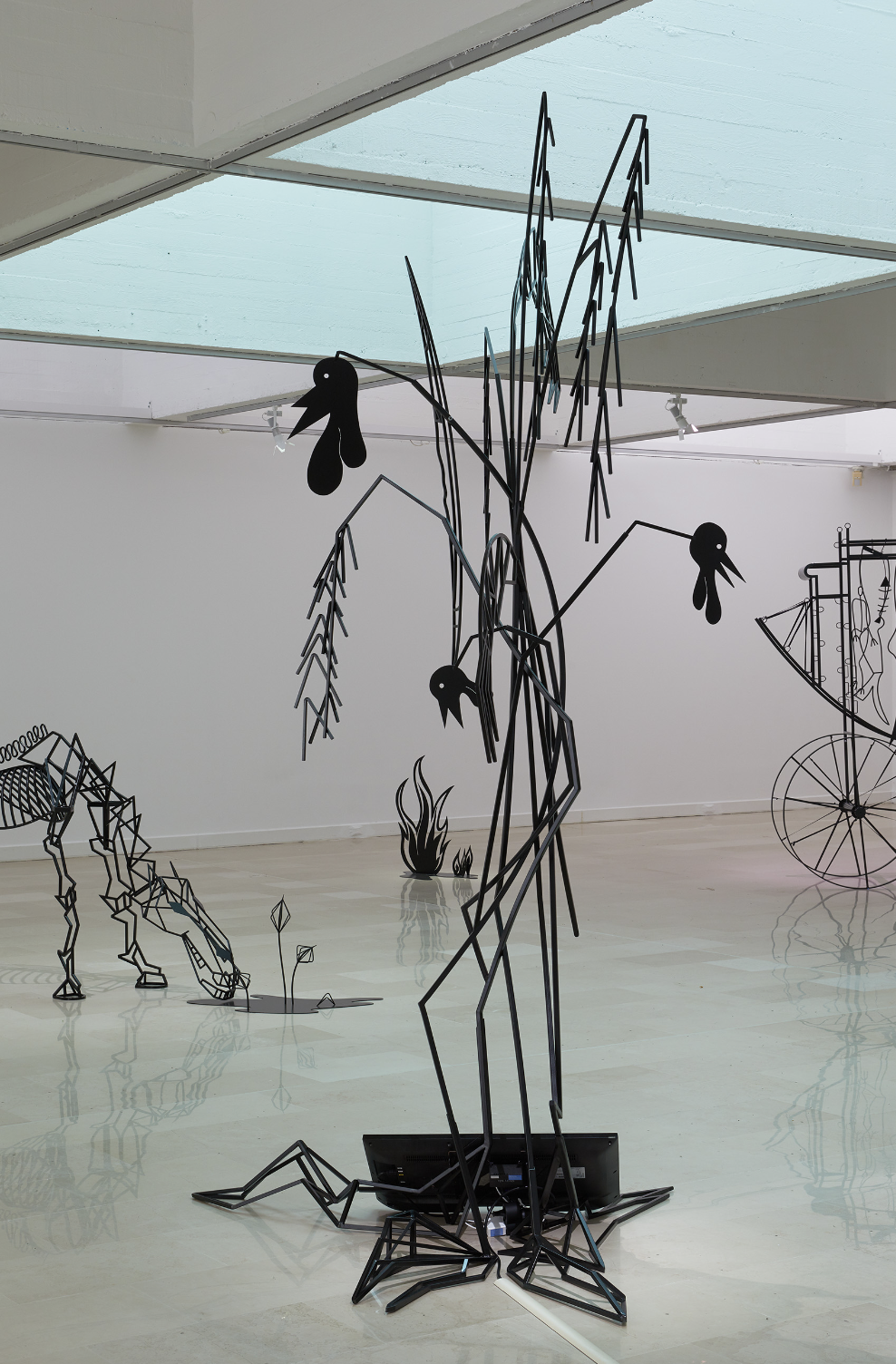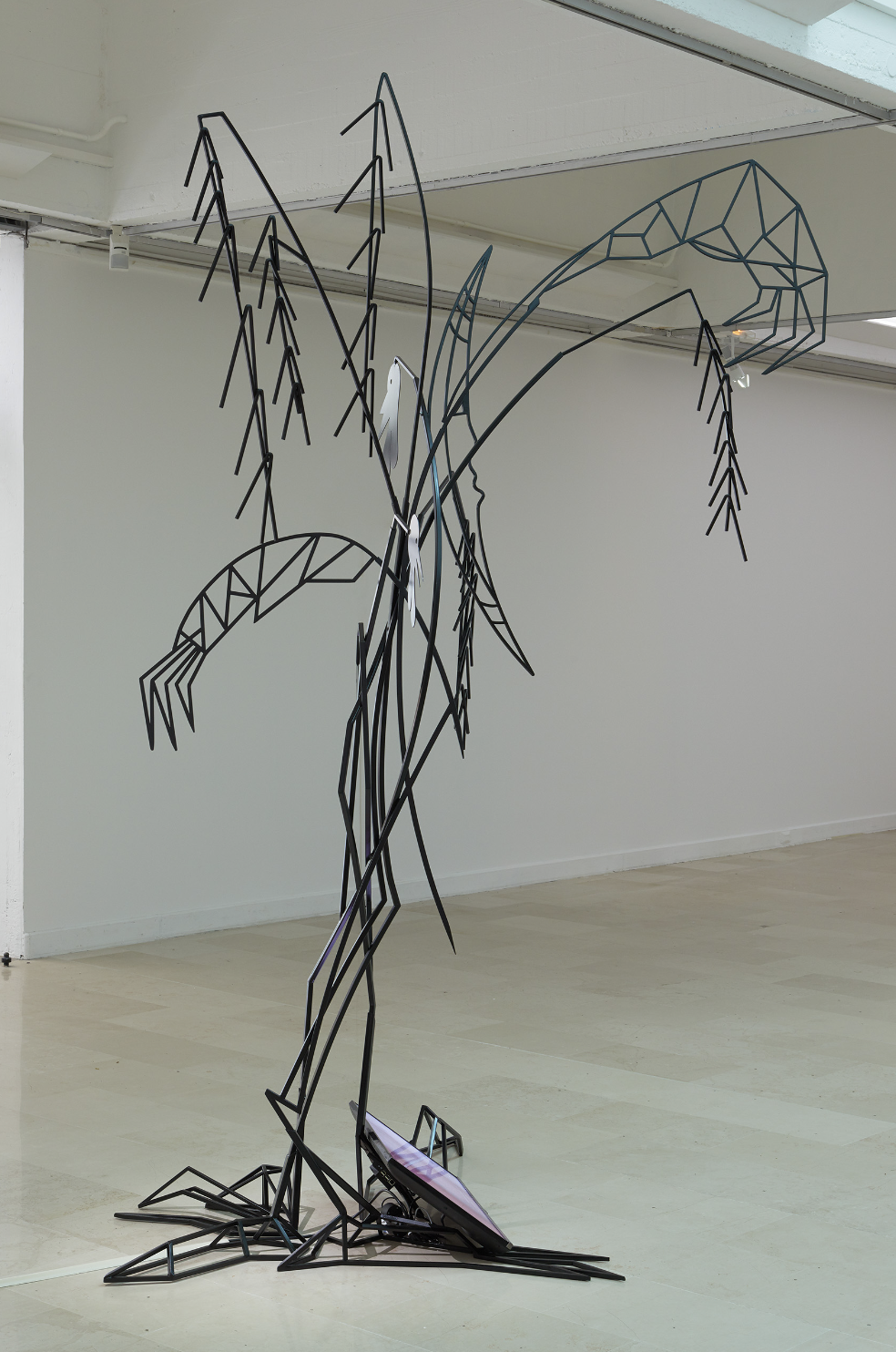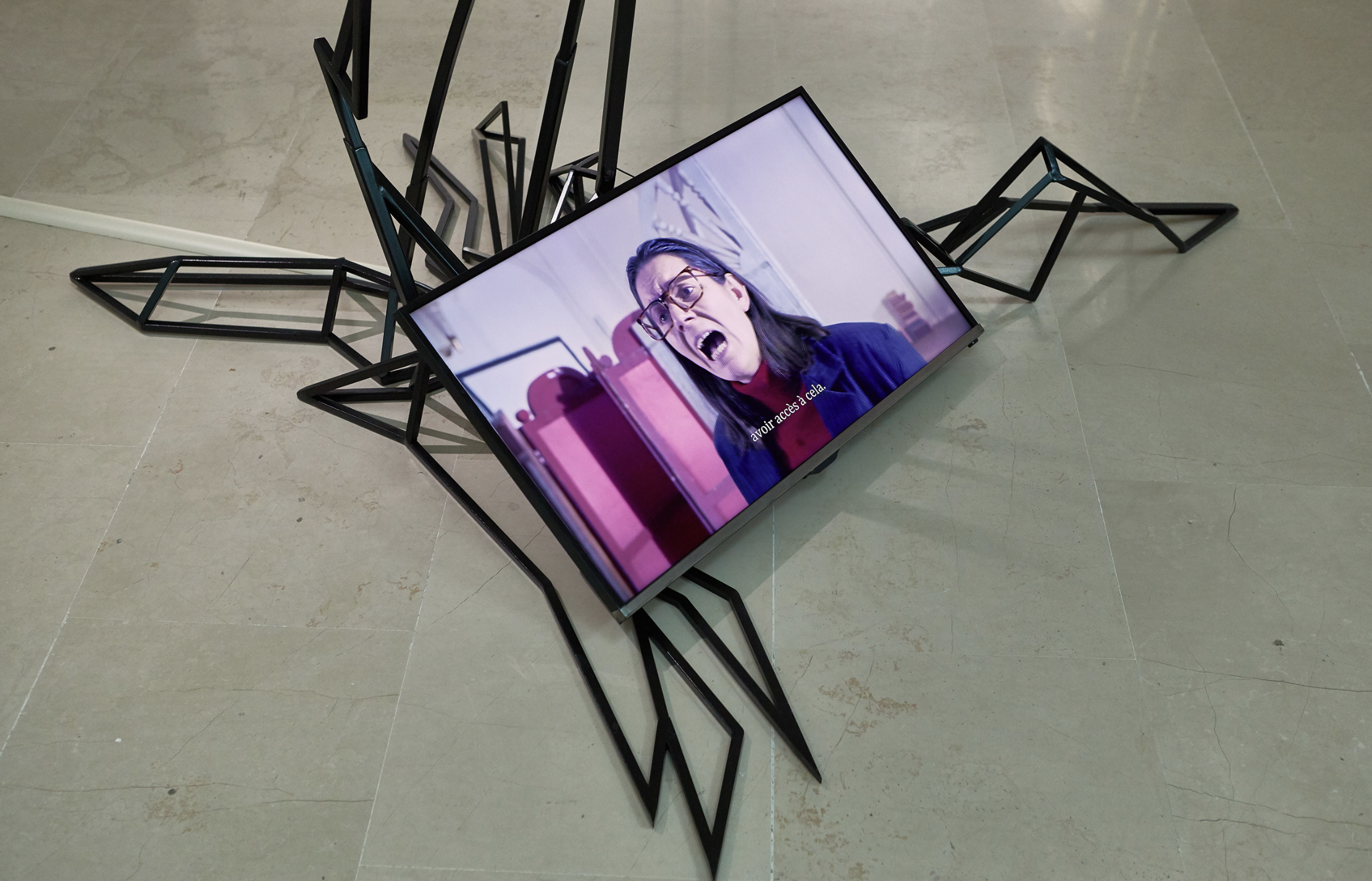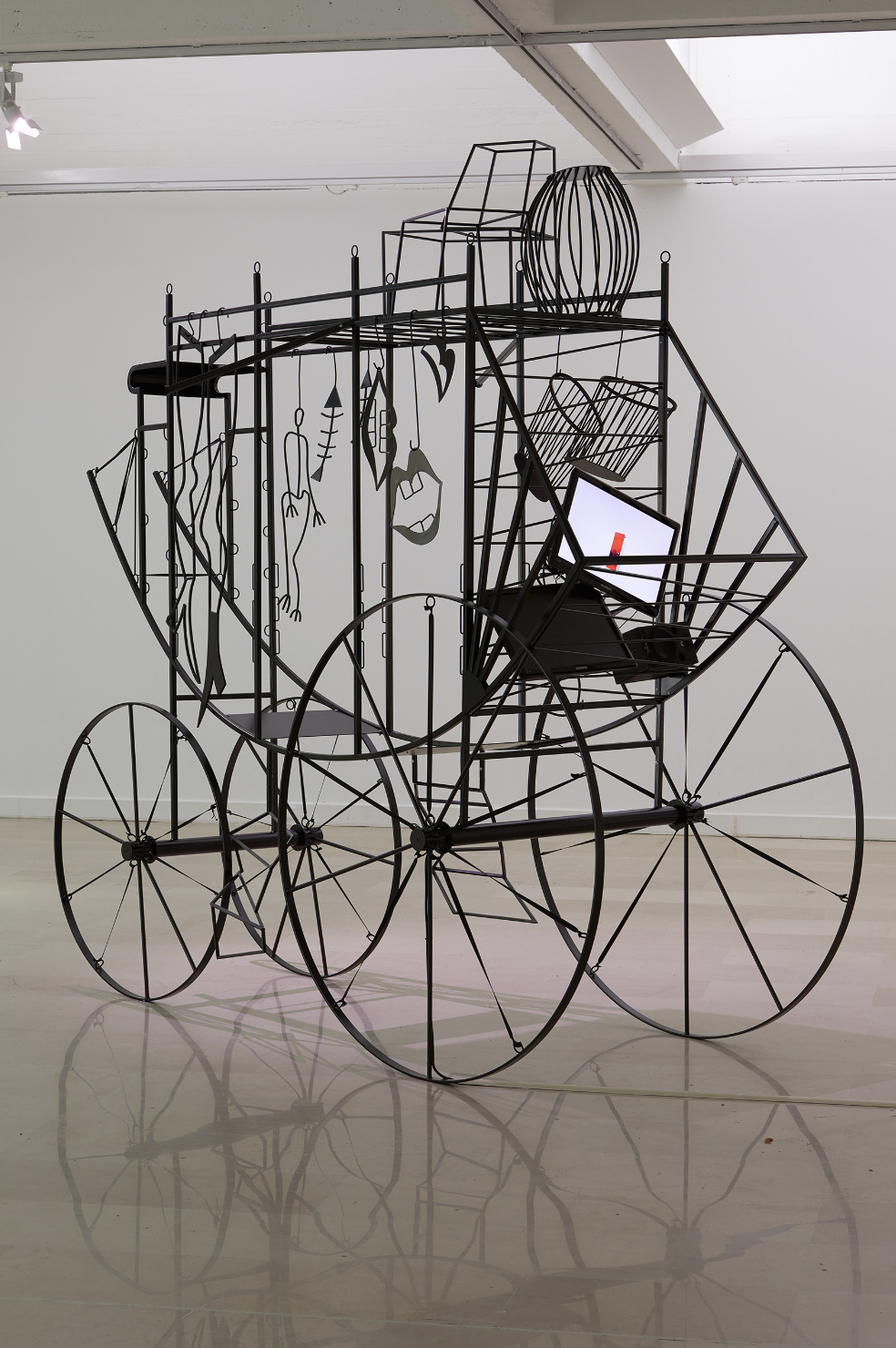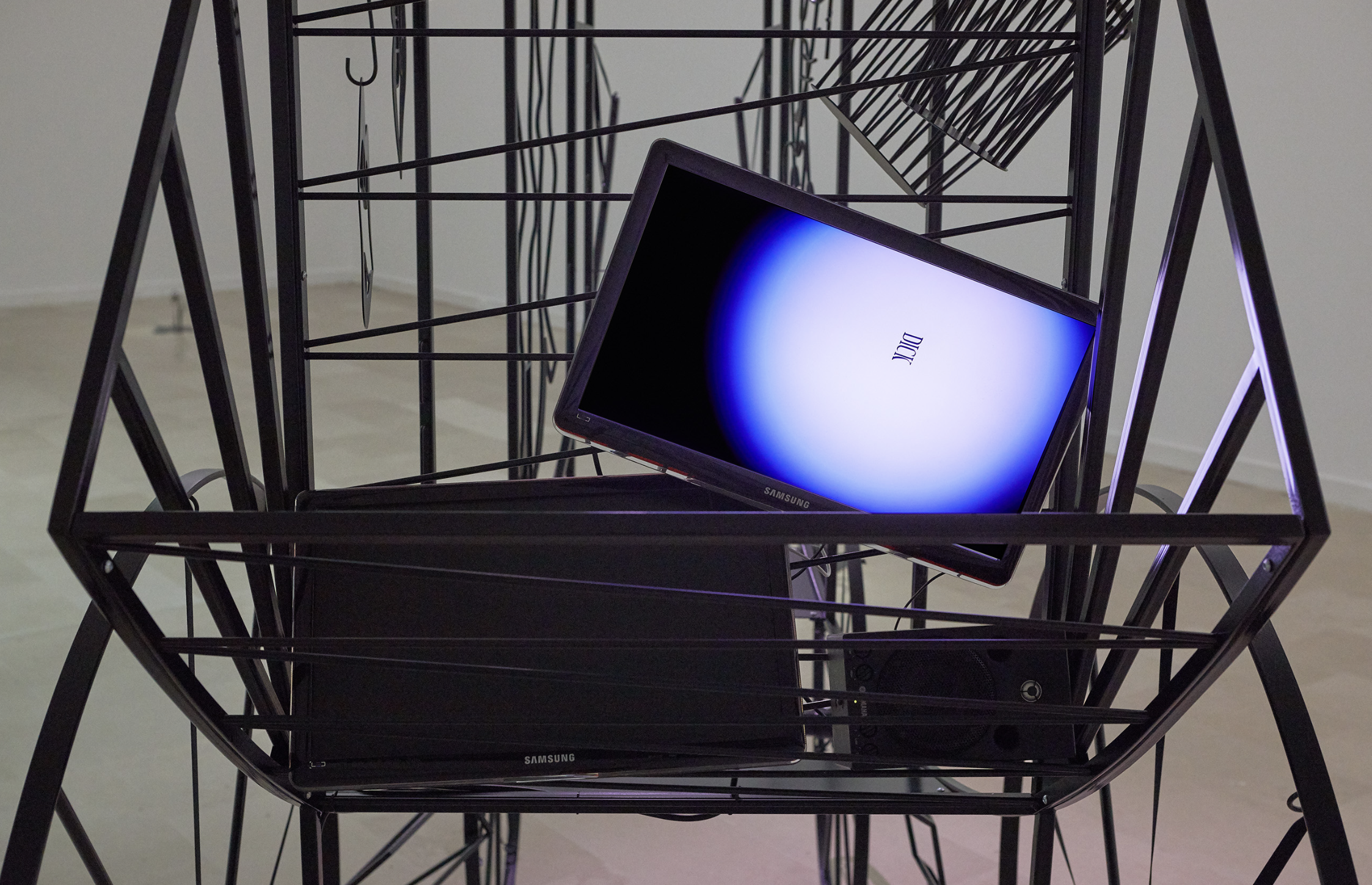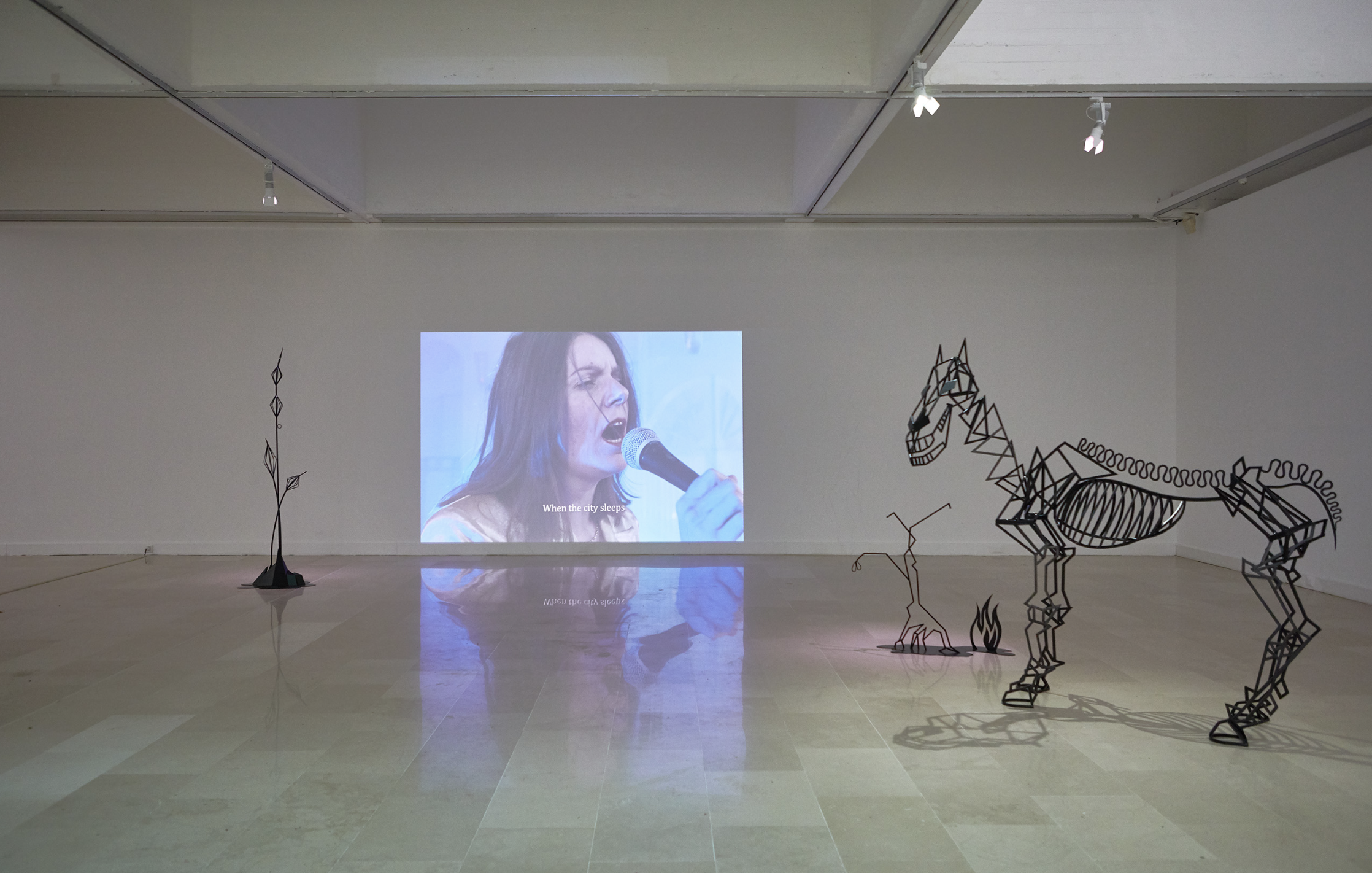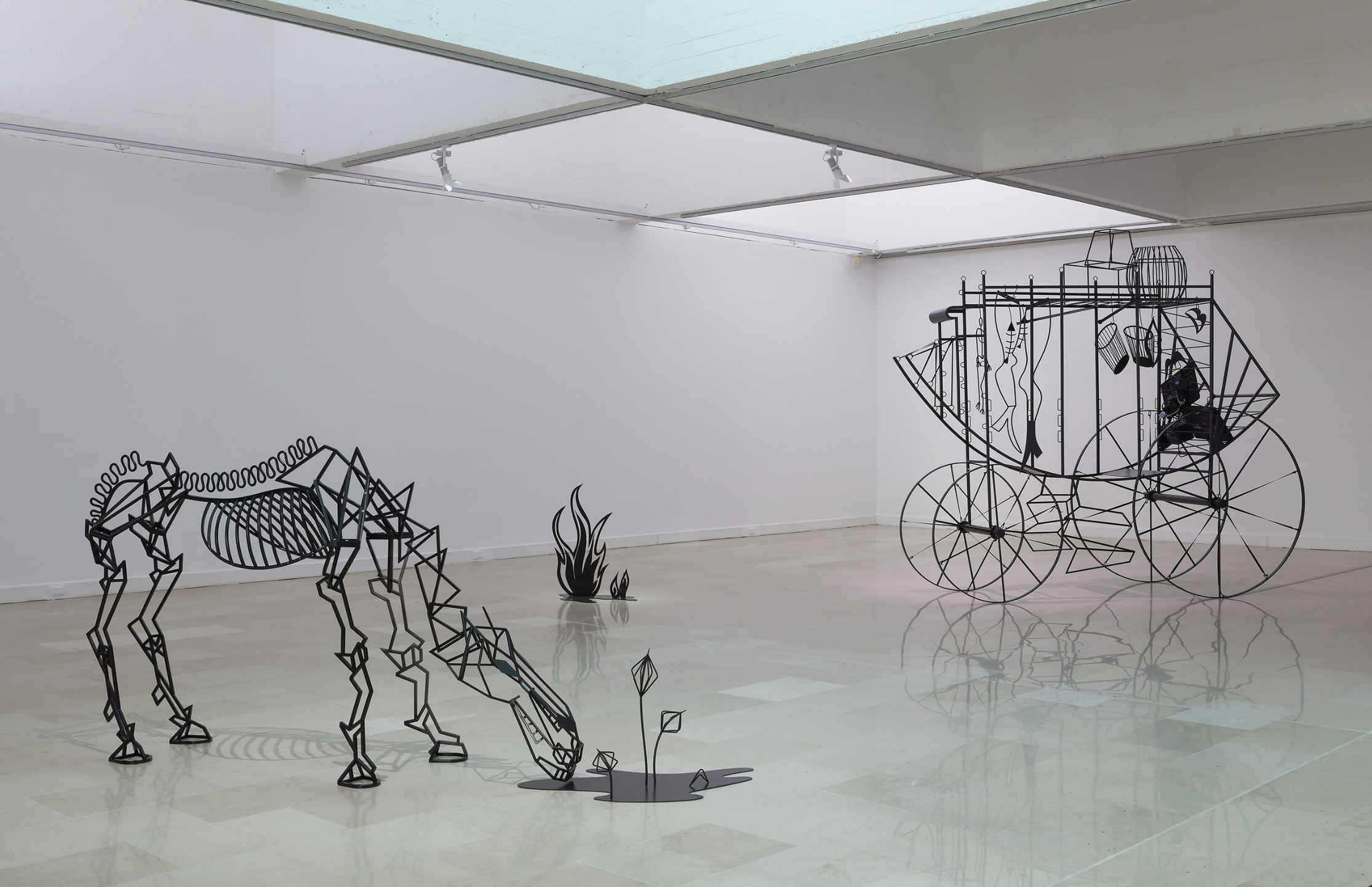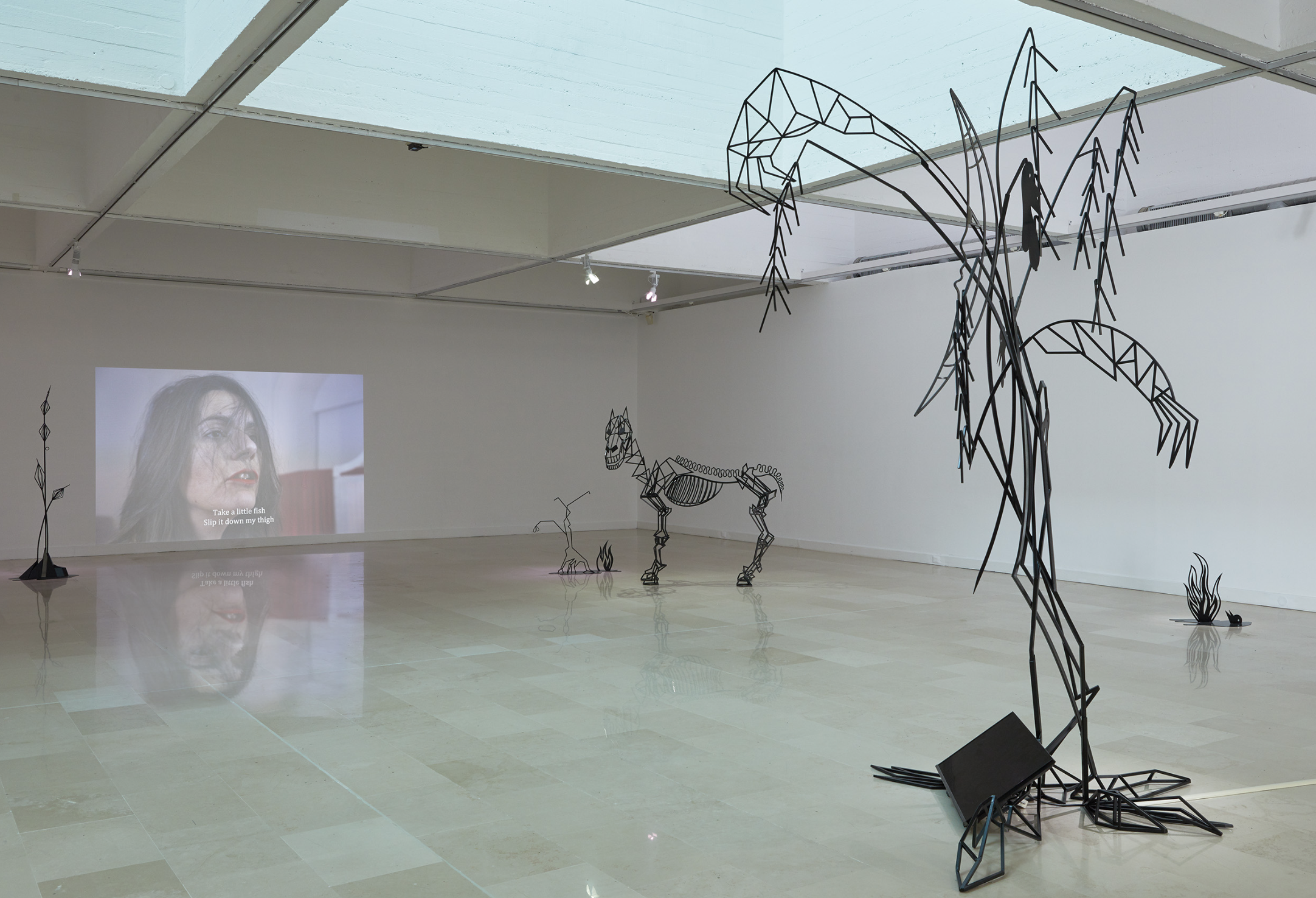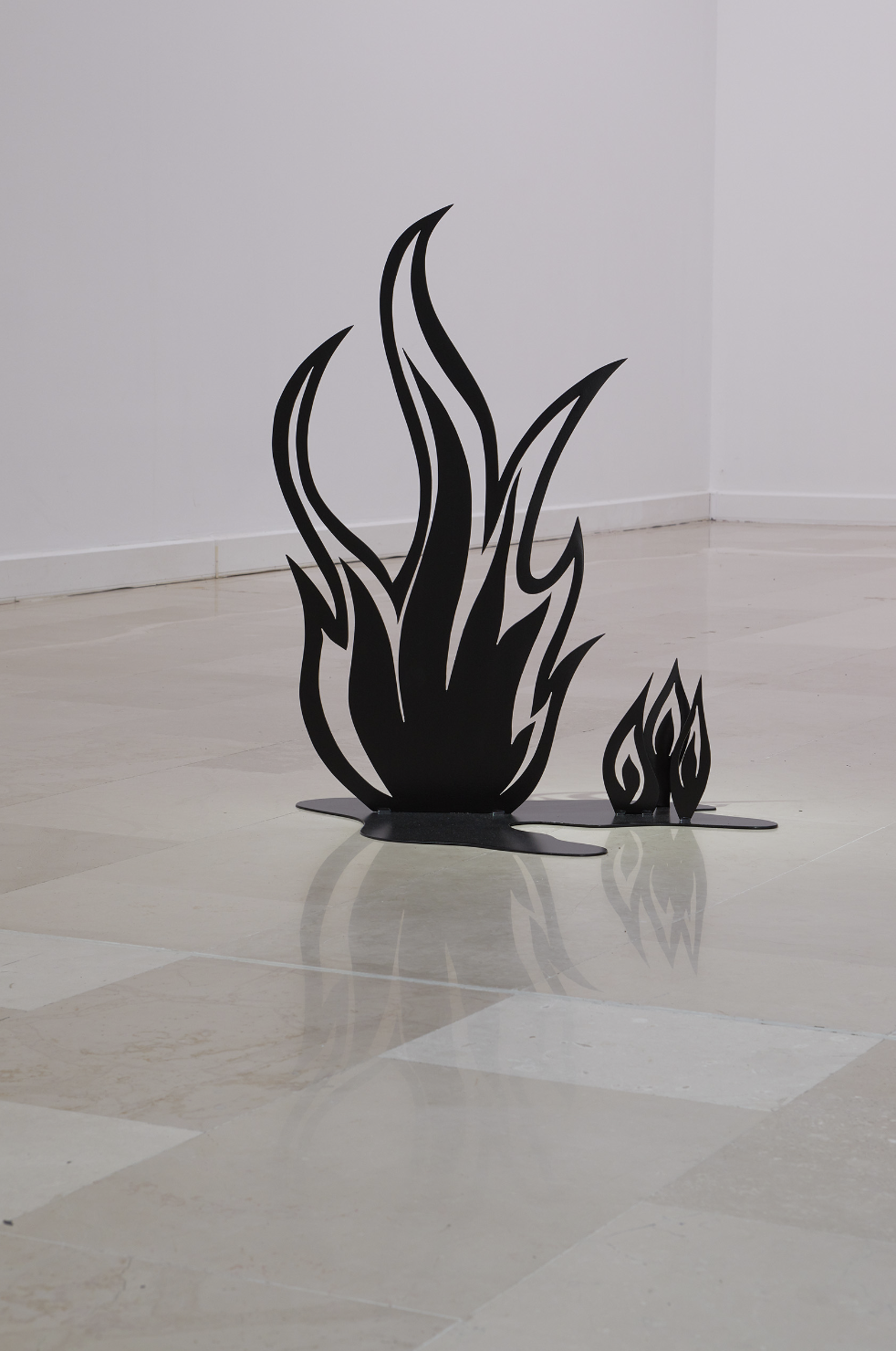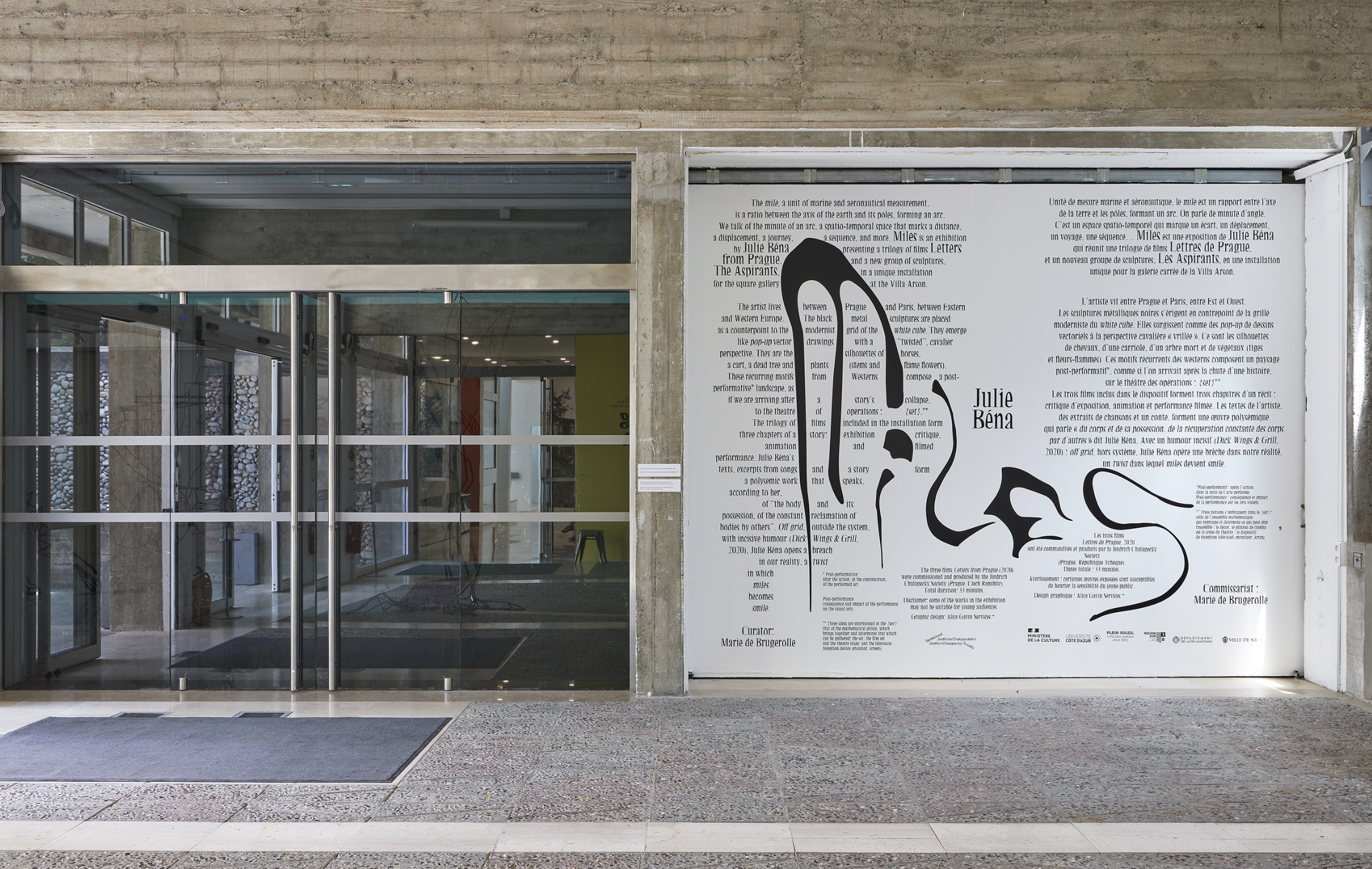Miles
2021
Solo show at Villa Arson
Curator: Marie de Brugerolle
graphic design: Alice Gavin services
The films Letters from Prague (2020) were commissioned and produced by the Jindrich Chalupecký Society (Prague, Czech Republic).
Publication to download here
https://villa-arson.fr/programmation/expositions/julie-bena-miles/
< Julie Béna’s work rests at the limits of genres, styles and languages. Unclassifiable, it creates tangents between artistic categories and aesthetics. The artist uses stratagems and subterfuges – theatre, theatricality, performance, film, theatrical object, sculpture, ritornello, scream, tragedy comedy – with an incisive humour. After graduating in 2007, she is returning to the Villa Arson at the invitation of Marie de Brugerolle with Miles, a solo exhibition conceived for the Galerie carrée.
It is structured around the oxymoron. Playing with ambiv- alence and self-contradiction, Julie Béna puts established patterns into question. The counterpoint, the twist, the bringing together of opposites are tools of an operatic ensemble: “light opera”, a work that is open and effective.
From the very beginning we are in another dimension, as
if on the surface of crumpled graph paper. Horses, a dead tree, a cart, fake rocks and flame flowers appear as life-size silhouettes in the space of the exhibition. The Aspirants is
a new group of steel sculptures, produced in Prague. Their sharp black cut-outs contrast with the regular grid of the gallery’s ceiling. The twelve pieces form a constellation. Their contours cast diffracted shadows on the ground. Pools form at the base of the flame flowers. They take a position against the orthonormal modernist grid of the square gallery and the white cube with its unequivocal formalism. As if escaped or “extruded” from a B western on television, or
the series Westworld, they are the carcasses or skeletons of a world in decline: that of the West that is at once pushing back and imposing borders.
The installation brings together a trilogy of films (Letters from Prague, 2020) situated as a counterpoint to the monumental group. The first film is shown on a flatscreen sitting at the foot of the tree, the second inserted into the back of the cart, amongst other monitors, while the third is projected onto a cloth stretched between two metal poles. The standard formats of the flat screens are reminders
of television and cinema projection. Thus, the scale is an important indicator of the desire to circumvent the visitors’ expectations, to render them as spectator. We are invited to bend, to lift our head, to move around the installation.
Three types of narratives, three kinds of shooting and three ways of showing the images are structured in chapters. The artist lets us hear singular voices that evoke the possession of bodies. Each is considered from the angle of love, appropriation or alienation. In Chapter 1, Julie Béna incarnates Czech theorist Jind?ich Chalupecký in order
to critique simplistic and misogynistic representations of gender in contemporary exhibitions. The narrative frame
is constructed from shots taken at the Moravian Gallery in Brno, in the Czech Republic, with oversized elements of the set and theatrical props. Screens, a piano and fake books make a {set} in red and black, through which the artist wanders, denouncing the cynicism of sculptural forms
that play with reductive clichés. Chapter 2 is an animated film (Welcome to Dicks Wings & Grill, 2020) in which the character Dick, saunters through a landscape made up
of typographic characters. The beings and the things are designated and designed by their letters. Dick is a hero dependent on his phallic function, personified in his name (Dick, a diminutive of Richard, remains one of the most common slang words for “penis”) ends up on the grill.
In the film of Chapter 3, Julie Béna performs in real time in
the midst of theatrical objects. She inverses the wings and backstage, which here become the stage. Julie Béna talks about perceptions linked to the possess of the body, mixing unique stories and songs. In this one long take, the camera itself literally performs the action to the rhythm of the artist’s nonstop movements.
By playing with physical and temporal scales, the artist induces a twisting in our projections of the world. The ellipsis is as important to the narrative from which passages are missing as a film with a nonlinear narrative, or sculptural abbreviations. An aesthetic of the fragment and metonymy unfolds interstitially, in sequences. Julie Béna plays a “wicked game”, one that reverses the rules and pauses
the game, and applies it, mainly to itself. This is how the installation puts into question, using reverse angles and cast shadows, what is related to the stage, backstage and off screen, from where the real emerges in all its harshness.>
Marie de Brugerolle
Translated by Bronwyn Mahoney
